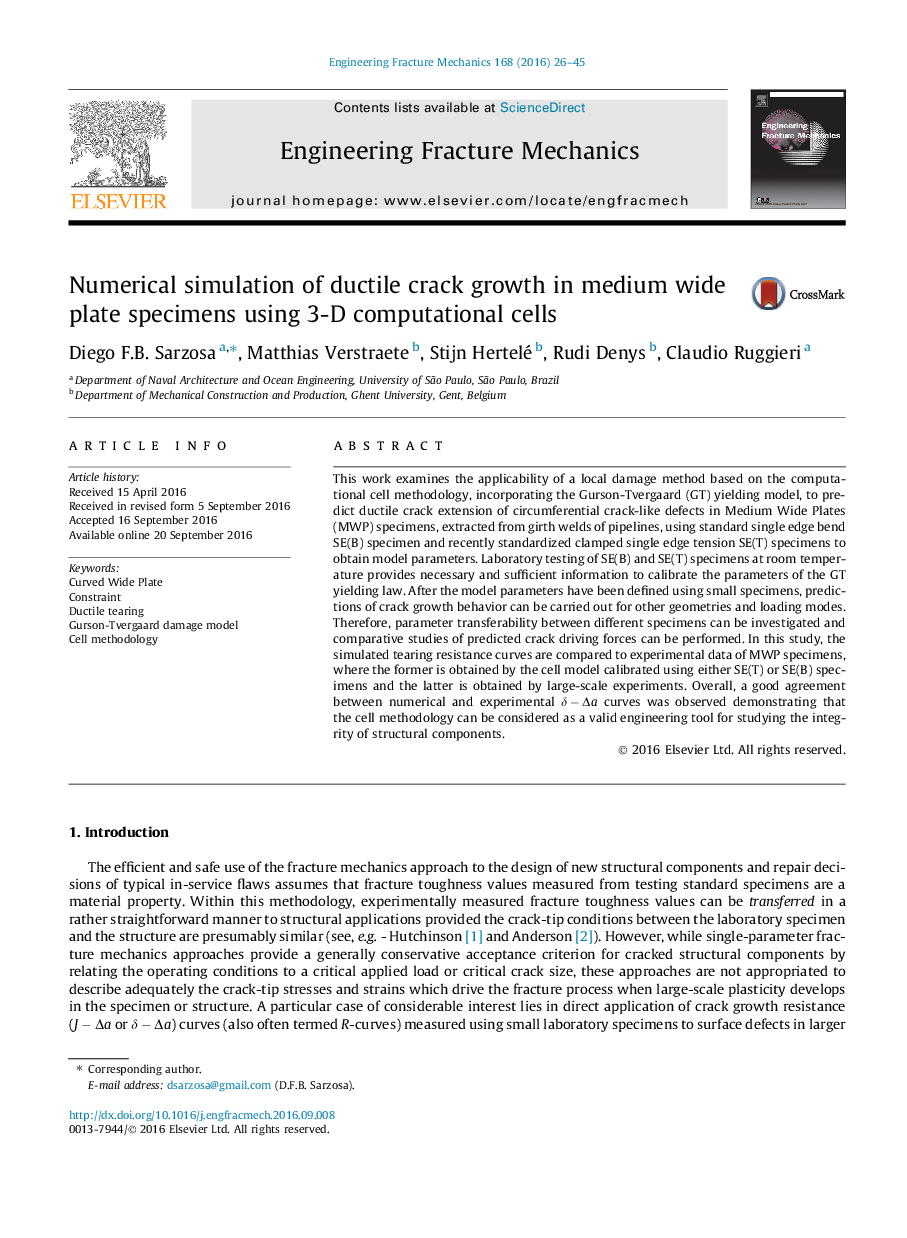| Article ID | Journal | Published Year | Pages | File Type |
|---|---|---|---|---|
| 5014202 | Engineering Fracture Mechanics | 2016 | 20 Pages |
Abstract
This work examines the applicability of a local damage method based on the computational cell methodology, incorporating the Gurson-Tvergaard (GT) yielding model, to predict ductile crack extension of circumferential crack-like defects in Medium Wide Plates (MWP) specimens, extracted from girth welds of pipelines, using standard single edge bend SE(B) specimen and recently standardized clamped single edge tension SE(T) specimens to obtain model parameters. Laboratory testing of SE(B) and SE(T) specimens at room temperature provides necessary and sufficient information to calibrate the parameters of the GT yielding law. After the model parameters have been defined using small specimens, predictions of crack growth behavior can be carried out for other geometries and loading modes. Therefore, parameter transferability between different specimens can be investigated and comparative studies of predicted crack driving forces can be performed. In this study, the simulated tearing resistance curves are compared to experimental data of MWP specimens, where the former is obtained by the cell model calibrated using either SE(T) or SE(B) specimens and the latter is obtained by large-scale experiments. Overall, a good agreement between numerical and experimental δ-Îa curves was observed demonstrating that the cell methodology can be considered as a valid engineering tool for studying the integrity of structural components.
Keywords
Related Topics
Physical Sciences and Engineering
Engineering
Mechanical Engineering
Authors
Diego F.B. Sarzosa, Matthias Verstraete, Stijn Hertelé, Rudi Denys, Claudio Ruggieri,
